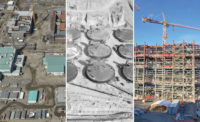
AU.K.-U.S. team has begun final negotiations with British officials to assume ownership and cleanup management of a defunct nuclear research site in Scotland, which would be Britain's second-largest decommissioning project. The team, selected on Nov. 23, is set to take over the Dounreay site in April if it can show how at least $780 million and six years can be cut from the current cleanup effort, which now may cost $4 billion and last until 2038.
On Nov. 23, the U.K. Nuclear Decommissioning Authority said it selected Babcock Dounreay Partnership to take over the site. The team consists of Babcock Nuclear Services Ltd., London; CH2M Hill Cos. Inc, Englewood, Colo., and a U.K. arm of URS Corp., San Francisco. It bested a bid from Caithness Solutions, a U.K.-based team of EnergySolutions, a Salt Lake City nuclear storage firm, and Amec Nuclear Holdings Ltd., London. A final contract and site transition is set for April 2.
At that time, the partnership will take over by share transfer Dounreay Site Restoration Ltd., the site license company formed by the government in 2008 to manage decommissioning. An AMEC spokeswoman says the firm is still "assessing our position" on future sitework. About 876 site employees would transfer to Babcock Dounreay.
The 140-acre Dounreay research complex is located near Thurso, on Scotland's north coast. Dounreay was the base of U.K. research into fast breeder reactor technology for about 40 years. The last of three experimental reactors was closed in 1994. The U.K.'s largest nuclear waste cleanup project is at the Sellafield site in England.
Over the next 15 to 20 years, the complex will be reduced to nuclear- waste storage facilities in the form of landscaped pits and heavily shielded underground concrete vaults. Construction began last month on the first of likely six vaults to receive up to 240,000 tonnes of low-level radioactive waste from site decommissioning and demolition, say U.K. published reports. Waste disposal is due to begin in 2014. After capping, vaults will be monitored for 300 years, by which time 95% of radioactivity will have decayed.






